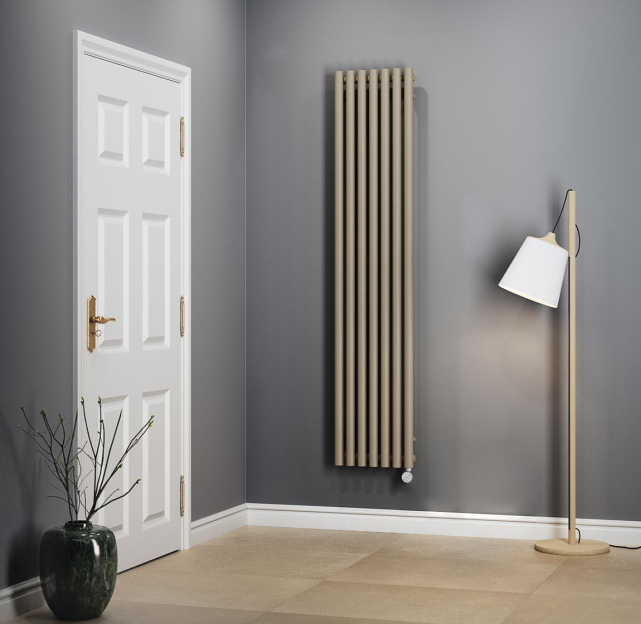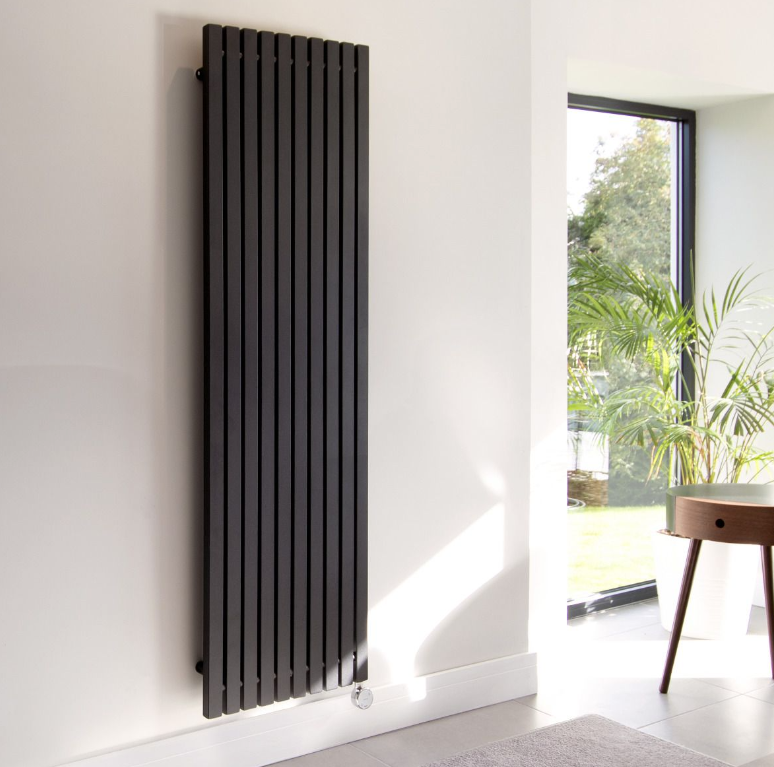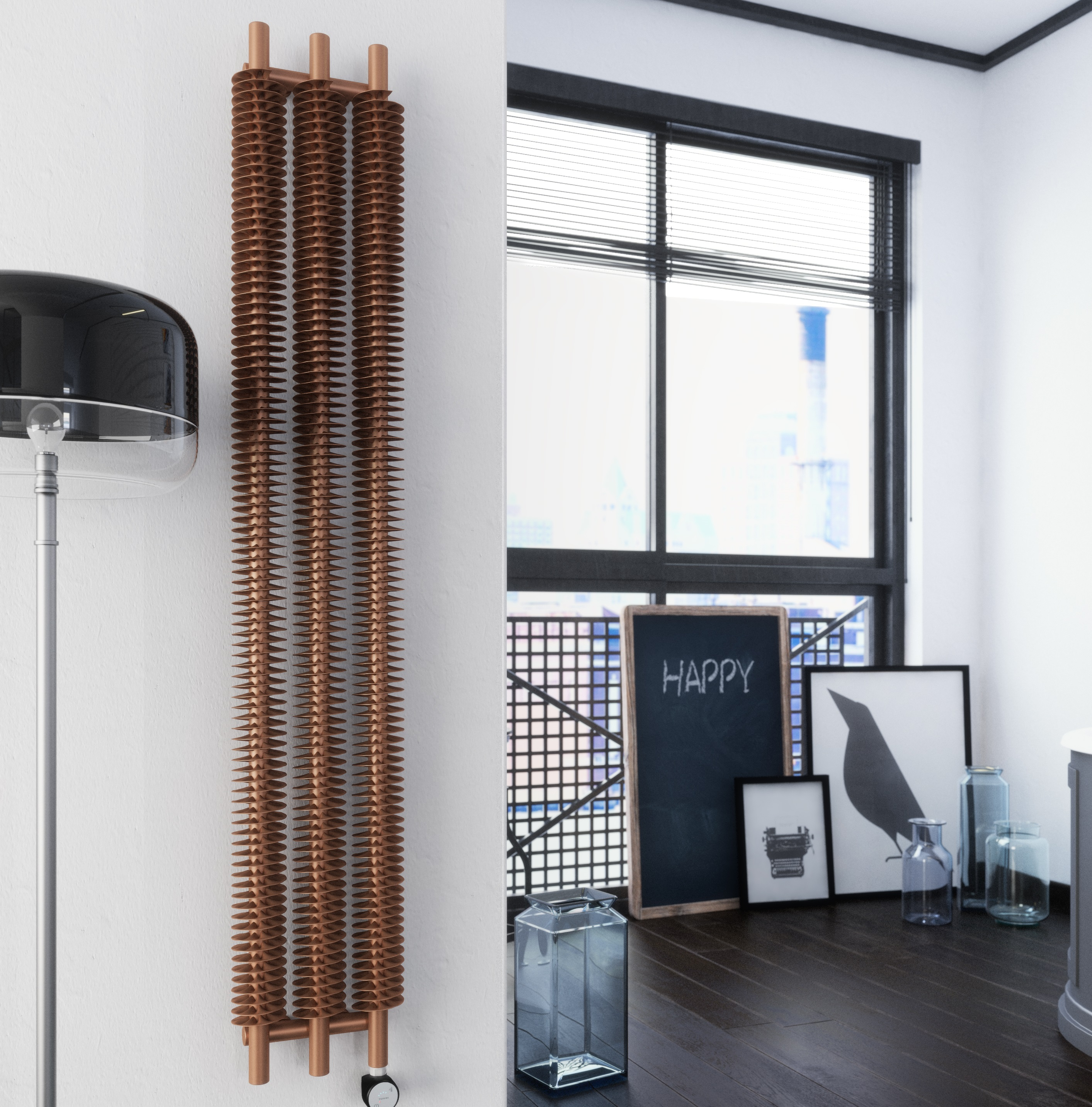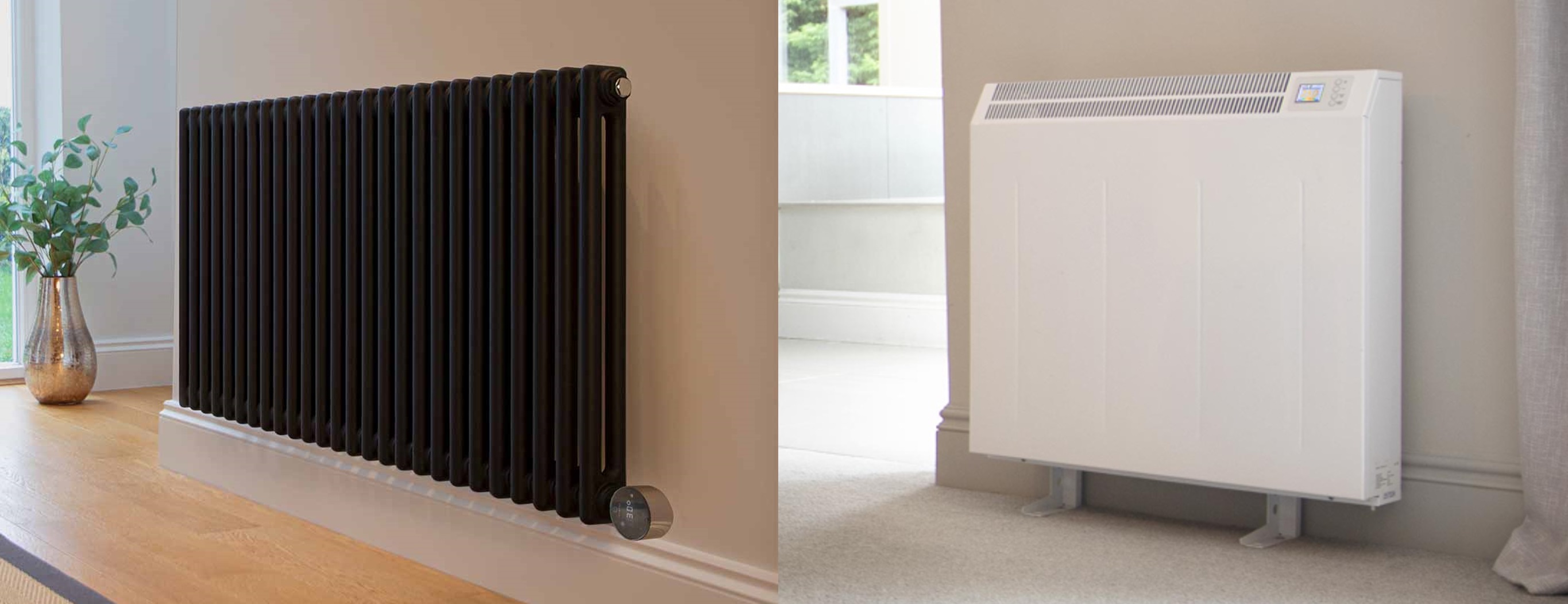

Fifty years ago, many households took advantage of Economy 7’s cheaper night-time electricity rates to heat their homes - all with the help of storage heaters. Whilst cost-effective at the time, these somewhat old-fashioned heaters tend to make homes too warm in the morning and not warm enough at night - leading users to switch them on when energy rates are at their highest. With a great deal of energy-saving functions available, electric radiators offer both style and substance. All-day heat, trimmed energy bills and stylish aesthetics abound - electric radiators top the charts every time.
What are storage heaters?
Storage heaters are large aluminum electric heaters, with a set of clay or ceramic bricks, alongside a heating element, at their cores. They work by drawing power during the night, on an off-peak electricity rate called Economy 7.
What is Economy 7?
It’s called Economy 7, as it’s a tariff of electricity that is generally cheaper. As most of us hit the hay by midnight, the rate of electricity goes down at this time, reflecting the decrease in demand. As storage heaters heat their internal bricks during the small hours of 12am and 7am, they are considered to save money by making the most of that cheaper rate. This is a trade-off though, as at every other hour, the ‘Economy’ rate is actually much higher than the baseline, average tariff.
How do storage heaters heat?
These bricks effectively store all heat that’s generated, so in theory, it can be released gradually over the course of the next day - bypassing the need to use the more expensive daytime rates.
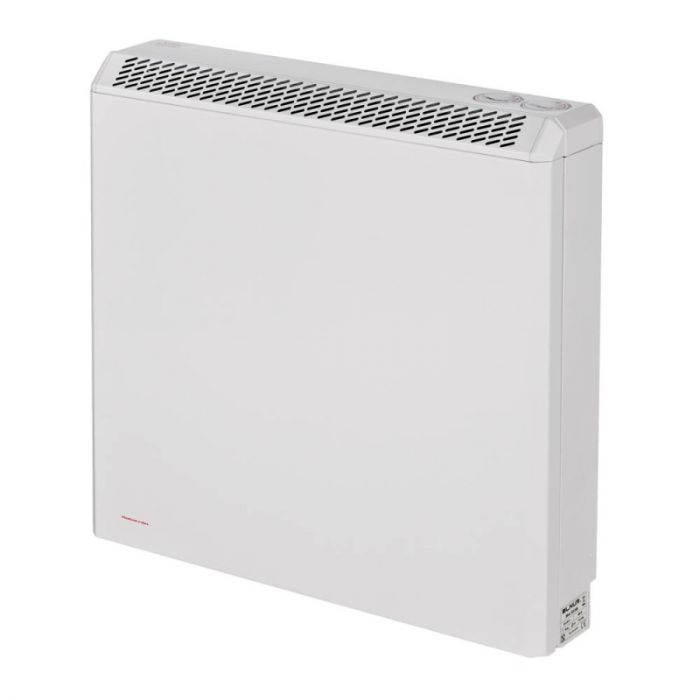

Storage heaters use convection to transfer heat. Convection works by exposing the air to a hot material - in this case, a storage heater’s heating element and internal bricks. Famously, hot air rises and cooler air drops before also being warmed by the heater, resulting in a convection current. This is where air in a room cycles around, rising and falling in relation to a hot element.
What are electric radiators?
Electric radiators are the much more modern heating option. Coming in an array of sizes, orientations and aesthetics, electric radiators are slimline, unobtrusive units, built to blend in seamlessly with modern decor. Made for all-day use, they connect to a home’s main energy supply, and are designed to be turned on when needed and off when not. They do not run on an economy tariff, but their high levels of controllability ensure a more energy-efficient experience.
How do electric radiators heat?
Electric radiators heat through convection, too, but also through radiant warmth. Radiant warmth is a completely safe form of radiation that effectively warms people and objects in a direct, focused line. This combination of convection and radiant warmth results in an incredibly efficient form of heat that’s both highly responsive and long lasting, making spaces warm and inviting from top-to-bottom.
What are the different types of electric radiator?
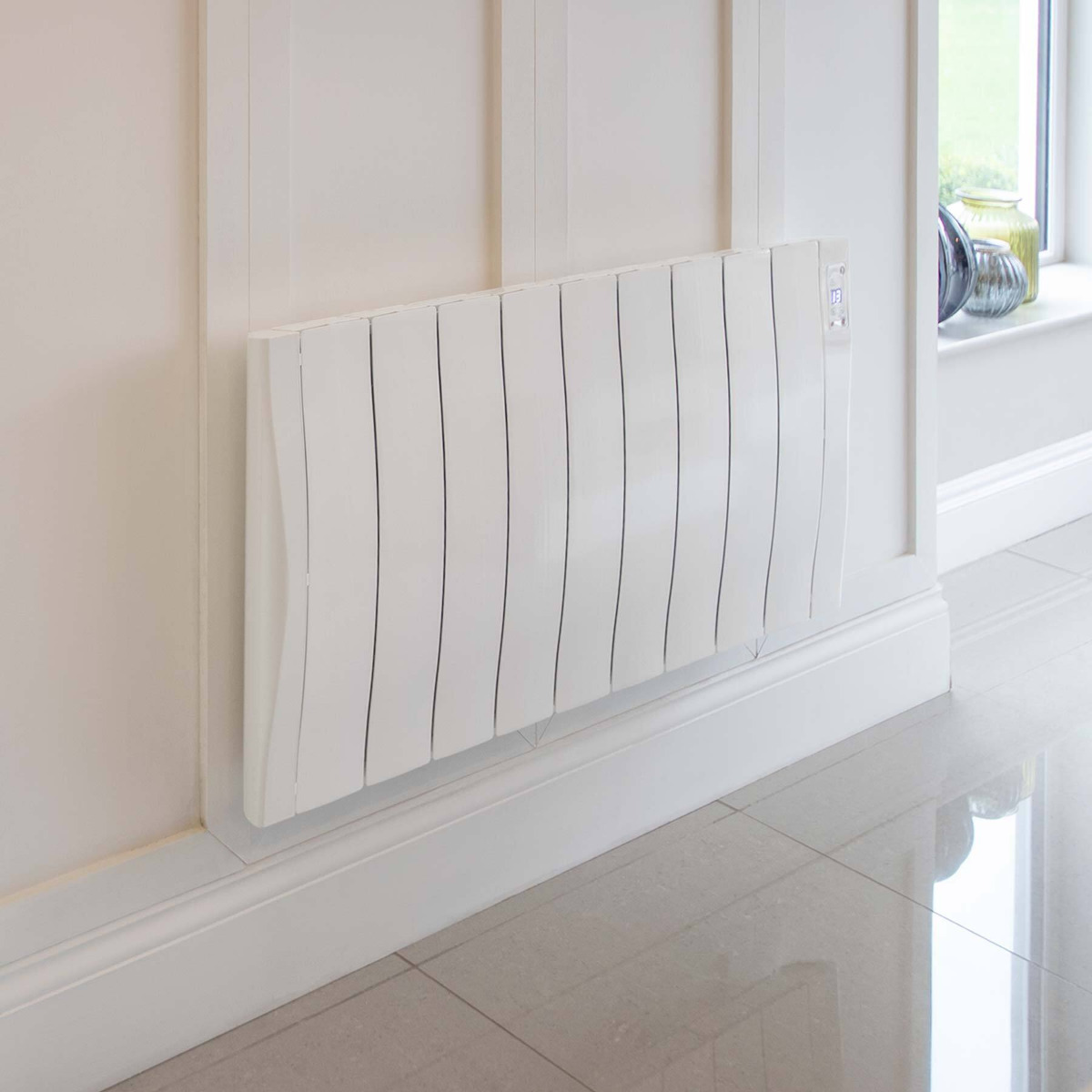

Dry thermal
Dry thermal electric radiators have one solid state heating element to warm rooms quickly and efficiently. They’re highly responsive, heating and cooling quickly.
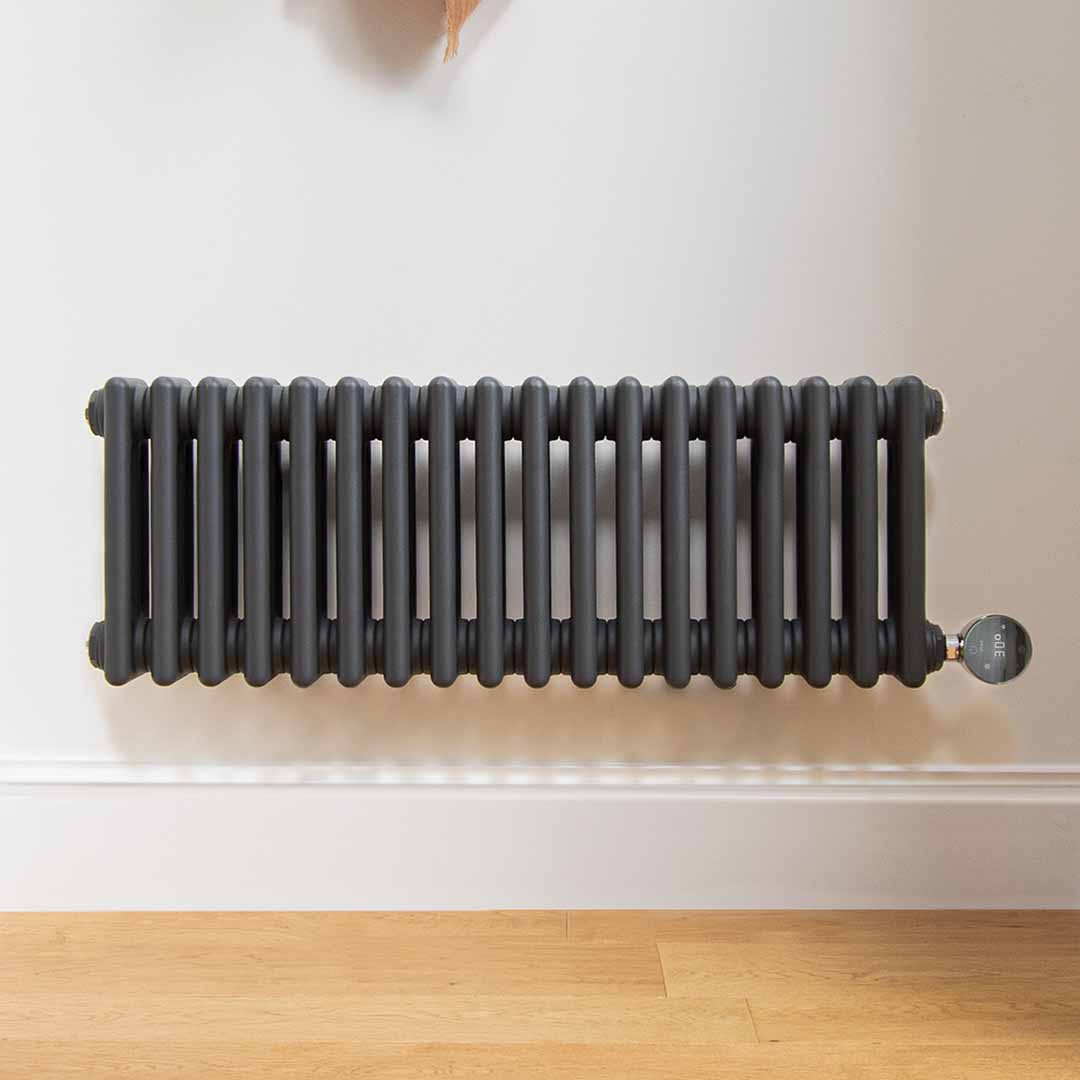

Oil-filled
Using thermodynamic gels and liquids to retain heat, oil-filled electric radiators ensure even distribution throughout rooms both large and small, with slow cool down times.
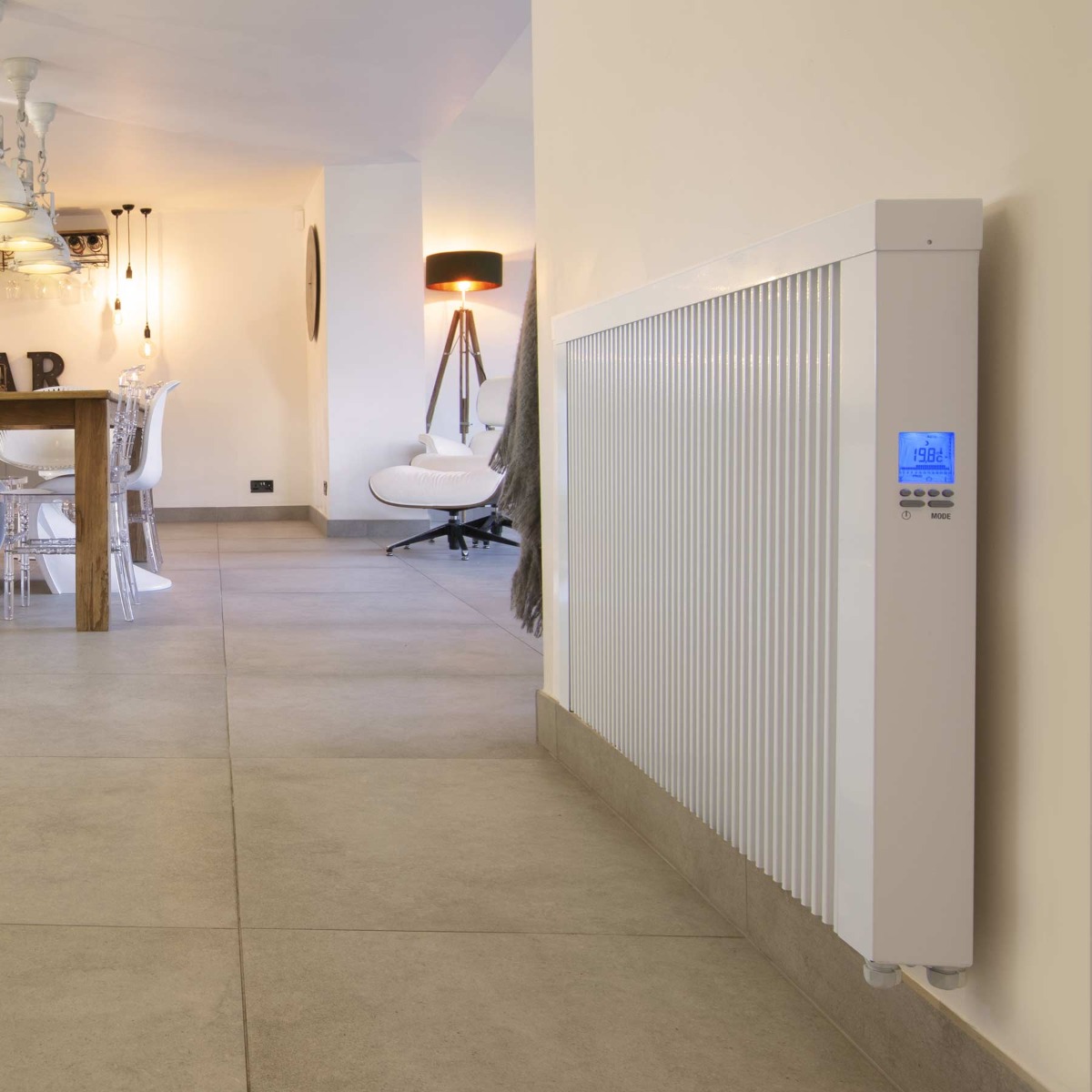

Dry stone
With a heating element baked into a set of ceramic stones, ceramic electric radiators lock in heat at their cores, ensuring it sticks around. They provide greater levels of radiant warmth, making them perfect for harder-to-heat spaces.
Electric radiators vs. storage heaters: a comparison
Straightforward installation
Both storage heaters and electric radiators boast simple installation, especially when compared with gas systems. Storage heaters must be mounted to a wall with their feet planted on a firm, level surface. They then need to be paired with a special off-peak circuit, which is a simple job for an electrician. Electric radiators are similar, particularly oil-filled ones, as they need hardwiring to your mains electricity by a qualified pro. Some electric radiators, like the iQ Ceramic, are even able to be plugged into your home’s standard 3-pin sockets, completely DIY - for a totally no-fuss, zero-appointment, heating switch.
Winner: It’s neck-and neck, but electric radiators just take the lead with their DIY options.
For a step-by-step guide on how to install our electric radiators completely DIY, check out this video.
Control: antiquated vs. modern
Unfortunately, traditional storage heaters haven’t been able to keep up with the advancing technology of electric radiators, especially when it comes to control. Storage heaters heat up throughout the night, ‘storing’ warmth so it can be released throughout the next day. In reality, this heat begins distributing straight away, making homes warm in the early hours of the morning - the times we’re least likely to need the heat. To make matters worse, storage heaters must be set in advance - and underestimating how much heat you’ll need on a certain day may leave you in the cold.
As electric radiators are designed to be used whenever heat is needed throughout the day, there are various control options on offer designed to mirror modern lifestyles to a tee:
- Precision Thermostats: Designed to ensure even heat distribution all day long, electric radiators with in-built precision thermostats guarantee your heating never fluctuates from your temperature settings. Keep an eye out for TRIAC precision thermostats in particular - completely silent, they offer especially precise ± temperature boundaries.
- 24/7 Programming: Forget the days of waking up to a stuffy home and going to sleep in a freezing one - with electric radiators, you can program exactly when you want heat, so that it perfectly matches your lifestyle.
- WiFi Control: Putting the inner workings of your electric heater into the palm of your hand, WiFi control ensures that all of these above features, and more, are easily implemented from an intuitive app on a smart device.
Winner: Electric radiators – with unrivalled heating control and a variety of features built to personalise your heating, including smart control and detailed scheduling, storage heaters are unable to compete.
Heating technology: problematic vs. comprehensive
As we touched on earlier, storage heaters work solely through convection, whereas electric radiators use a combination of convection and radiation. The issue with convection-only heaters is that warmth is easily lost to draughts and open doors or windows, which will have a negative impact on efficiency and running costs. Plus, convection often disturb dormant dust particles, exacerbating allergies, asthma, and affecting overall cleanliness.
Electric radiators, produce around a third of their heat through radiation (with this figure rising to 50% for ceramic radiators like the Ecowarme). Radiant warmth does not heat the air - and in doing so, avoids a lot of the issues with convection. It is even able to sink into walls, effortlessly keeping mould and damp at bay by reducing the amount of cold surfaces in a room. Whilst electric radiators do use convection, it is balanced with the more robust and healthy radiant warmth - creating rooms in which the air, its objects, and even the walls, are thoroughly warmed.
Winner: Offering a two-pronged approach to heating, electric radiators warm people directly alongside the surrounding air, creating a cosy cocoon of warmth.
Aesthetics: dated vs. fashionable
Storage heaters are notoriously bulky rectangular units coming in muted greys and washed-out whites. In order to accommodate the necessary number of bricks, they generally jut out into a space quite noticeably, with depths of around 200mm.
In comparison, electric radiators come in a variety of colours - think crisp, glossy whites, trendy anthracites, powder-coated blacks and even copper and mocha. With horizontal and vertical models on offer, you’re less constricted when it comes to size, as fitting your heating in-line with narrow spots or low-level conservatory walls is easily done. Also, with average depths of around 100mm, they encroach much less upon the general volume of a room than storage heaters.
Winner: Slimline and stylish, there are many modern design options on offer with electric radiators.
The Verdict
| Storage heaters | Electric radiators | |
| Simple installation | ✓ | ✓ |
| Modern controllability, including WiFi control | X | ✓ |
| Adapts to modern lifestyles | X | ✓ |
| All-encompassing, healthy heat | X | ✓ |
| A range of energy-saving features | X | ✓ |
| Stylish designs and colourways | X | ✓ |
Replacing an old storage heater with an electric radiator
Here at Electric Radiators Direct, we champion the all-round comfort and high energy efficiency provided by electric radiators. However, we also know that changing the way you heat your home can be a big adjustment, and if you’ve used storage heaters for decades, it’s understandable to want to stick with what you know.
The good news is, replacing a storage heater with an electric radiator is a very simple, fuss-free job. Whilst it can’t be done yourself (unless you’re a qualified sparky!), it is a straightforward procedure for an electrician, which won’t require a lengthy call out.
Reconsider your heating today with Electric Radiators Direct
We certainly owe a lot to storage heaters - fifty years ago, their technology helped many homes stay toasty for less. These days, they have morphed into more of a false economy. Electric radiators provide a much more modern experience in every way - their control, looks, heating technology and energy-efficiency are a cut above storage heaters in every way.
Key takeaways
- Storage heaters provided a way of heating homes on the cheaper Economy 7 electricity tariff. They heat during the night, and begin releasing this heat in the early morning.
- Electric radiators are modern heating solutions primed for optimal energy-efficiency through their various heat-retentive properties, like thermodynamic oil and ceramic plates.
- When pitted against each other, electric radiators excel on various levels - control, aesthetics and precision to name a few - and make a like-for-like replacement for storage heaters.






